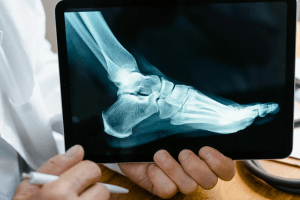Telehealth has rapidly evolved from a niche service to a central pillar of the US healthcare system. The COVID-19 pandemic accelerated this shift, breaking down regulatory and technological barriers and driving widespread adoption across diverse patient populations. According to recent analysis from the Kaiser Family Foundation (KFF), telehealth use surged by over 40% in rural and underserved communities, revolutionizing how patients connect with healthcare providers.
Key Drivers of Telehealth Adoption
Technology, policy, and patient demand converge
Several factors have fueled the growth of telehealth services:
- Technological Advancements: Increased smartphone penetration, improved broadband access, and user-friendly telehealth platforms have made virtual visits accessible and convenient.
- Policy Changes: Regulatory flexibilities during the public health emergency, such as expanded Medicare and Medicaid reimbursements, have made telehealth financially viable for providers and patients alike. Many states are now considering permanent adoption of these policies.
- Patient Preferences: Convenience, reduced travel, and safety concerns have made telehealth a preferred option for routine consultations, chronic disease management, and mental health services.
Impact on Healthcare Outcomes and Access
Bridging gaps and improving quality of care
Telehealth has demonstrated significant benefits in improving healthcare delivery, especially for vulnerable populations:
- Expanded Access in Rural Areas: Patients in geographically isolated regions can now receive timely care from specialists without the burden of long-distance travel. This reduces delays in diagnosis and treatment.
- Chronic Disease Management: Remote monitoring and virtual check-ins enable better management of conditions such as diabetes, hypertension, and heart disease, leading to fewer hospitalizations and improved patient adherence.
- Mental Health Services: Teletherapy and counseling have become more accessible, addressing longstanding shortages in behavioral health providers.
KFF’s research highlights that over 60% of telehealth users reported high satisfaction and perceived quality of care comparable to in-person visits, underscoring telehealth’s potential to enhance patient-centered care.

Challenges and the Road Ahead
Addressing disparities and ensuring sustainable growth
Despite its promise, telehealth faces ongoing challenges:
- Digital Divide: Unequal access to high-speed internet and digital literacy gaps can exclude marginalized populations, potentially exacerbating health disparities.
- Privacy and Security: Ensuring patient data protection in virtual settings remains a critical concern requiring robust safeguards.
- Reimbursement and Regulation: As temporary waivers expire, sustained policy support and clear reimbursement frameworks are essential to maintain telehealth momentum.
Healthcare and biotech sectors continue innovating to overcome these barriers, including developing user-friendly interfaces, expanding broadband initiatives, and integrating telehealth with traditional care models.
Telehealth as a lasting legacy of healthcare transformation
Telehealth has fundamentally reshaped healthcare delivery in the US, offering more equitable, efficient, and patient-centered care. Its rapid adoption during the pandemic demonstrated resilience and adaptability within the healthcare system. With thoughtful policy, technology enhancements, and attention to equity, telehealth is poised to remain an integral part of the future healthcare landscape, driving innovation across healthcare and biotech industries.
Source: Kaiser Family Foundation (KFF) Telehealth Policy and Trends, 2025


